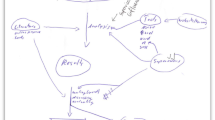Abstract
It is an ongoing challenge in higher education context to design appropriate learning tasks for students that balances the diversity in student knowledge and variable skills with student’s potential to learn under guidance. Obtaining feedback from students on what they know is made more complicated when students are passive during learning activities. In this paper we report on a project that ran over 2 years in which 67 students (28 in 2005; 39 in 2006) from culturally diverse socio-historical backgrounds used an anonymous knowledge sharing tool, the dynamic frequently asked questions (DFAQ) to engage with authentic learning tasks in an Organisational Learning Module. The module was part of the Organisational Psychology honours degree programme at a higher learning institution. The students used the DFAQ tool to consult with both peers and faculty staff. DFAQ is a special purpose web-based tool with a Short Message Services (SMS) interface. A thematic analysis was conducted on students’ experiences gathered from focus group discussions. Artefacts from DFAQ are also analysed. The paper reports that DFAQ mediated the educator’s access to the students’ level of understanding and the potential to learn under guidance. The DFAQ tool therefore allowed the educator to provide students with appropriate guidance that met individual students’ knowledge gaps. The paper concludes that DFAQ mediated access to the gap between actual and potential development, stimulated knowledge sharing, peer learning and impacted on pedagogical designs of learning tasks.



Similar content being viewed by others
References
Belanger, F., & Jordan, H. D. (2000). Evaluation and implementation of distance learning: Technologies, tools and techniques. London: Idea Group.
Hardman, J. (2005). Activity theory as a potential framework for technology research in an unequal terrain. South African Journal of Higher Education, 19(2), 378–391.
Jansen, K. (2004). Unpacking and re-packing knowledge in development. In D. Kolb, W. Panters, & H. Siebers (Eds.), Globalisation and development (pp. 163–190). Netherlands: Kluwer Academic.
Marquardt, M. (2005). Leading with questions. San Francisco: Jossey-Bass.
Miles, M. B., & Huberman, A. M. (1994). Qualitative data analysis (2nd ed.). California: Sage.
Ng’ambi, D. (2004). Towards a knowledge sharing framework based on student questions: the case for a dynamic FAQ environment. Ph.D. thesis (unpublished). University of Cape Town.
Salmon, G. (2000). E-Moderating: The key to teaching and learning online. London: Kogan Page.
Vygotsky, L. S. (1978). In M. Cole, V. John-Steiner, S. Scribner, & E. Souberman (Eds.),Mind in society: The development of higher psychological processes. Cambridge, MA: Harvard University Press.
Author information
Authors and Affiliations
Corresponding author
Rights and permissions
About this article
Cite this article
Ng’ambi, D., Goodman, S. Bridging distance between actual and potential development: A case of using ICT mediated consultation tool. Educ Inf Technol 14, 89–102 (2009). https://doi.org/10.1007/s10639-008-9074-8
Published:
Issue Date:
DOI: https://doi.org/10.1007/s10639-008-9074-8




